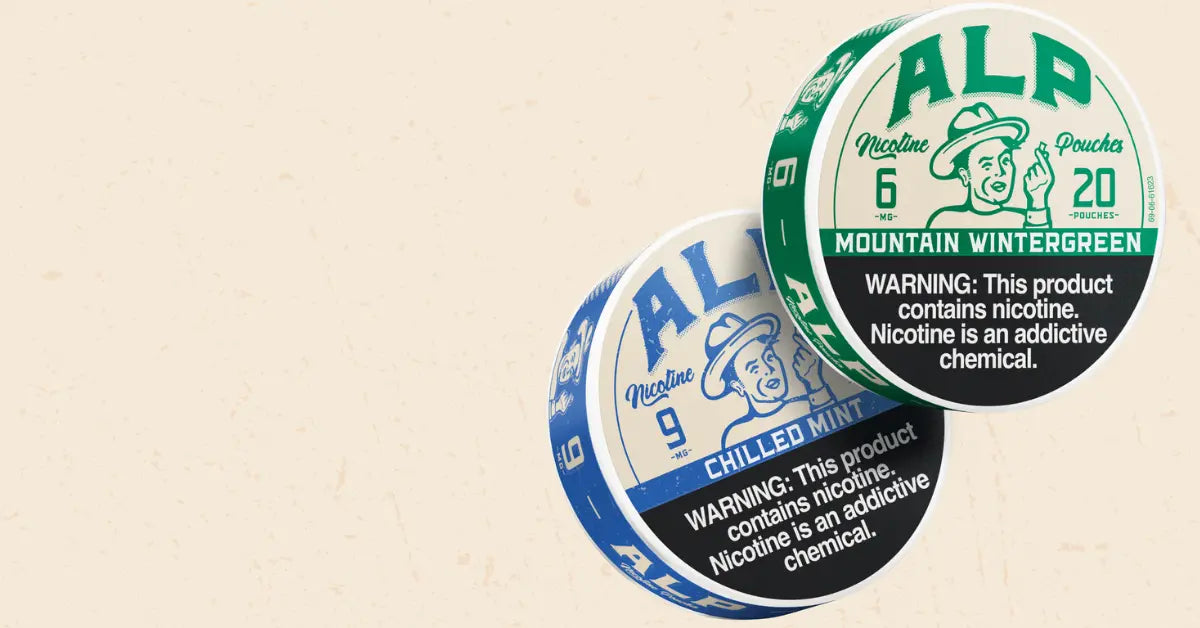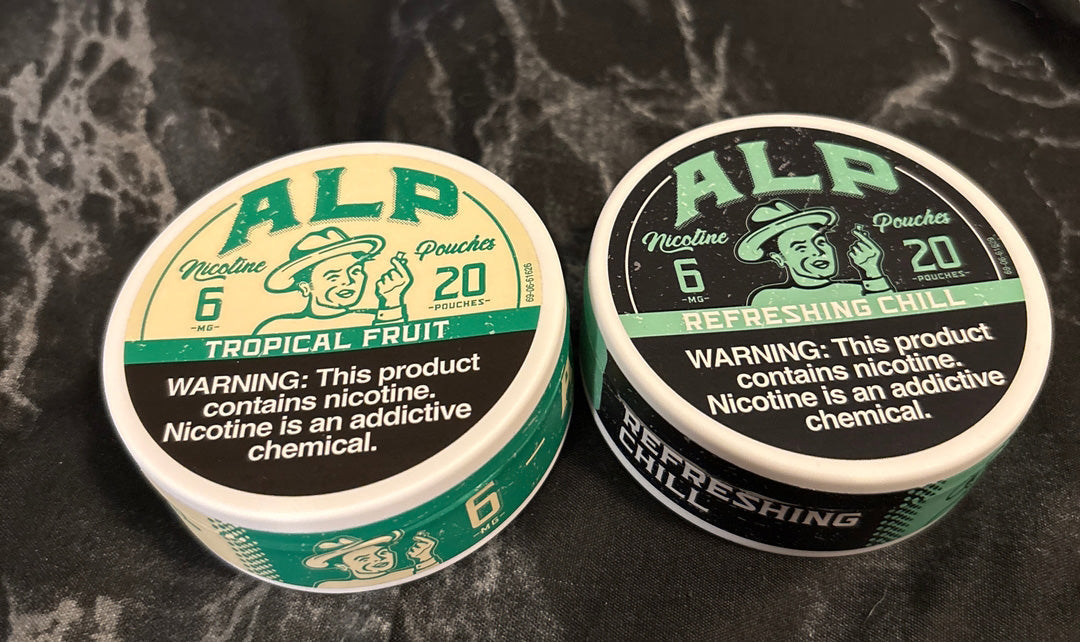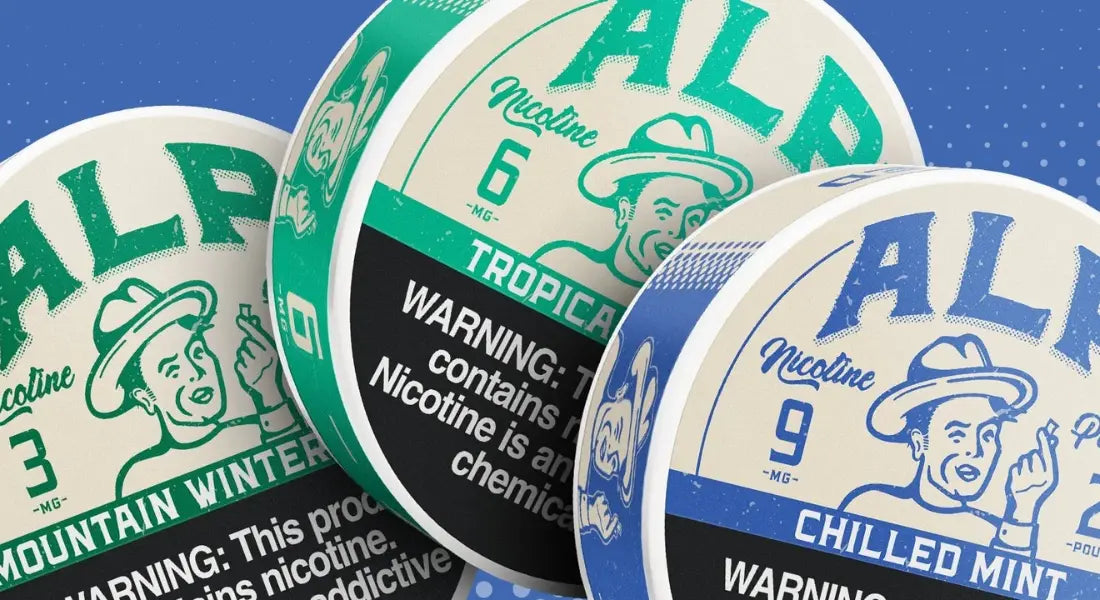
The War on Nicotine: Why Personal Freedom Matters
In recent years, the conversation around nicotine has intensified. Proponents of personal choice argue that individuals should have the freedom to make informed decisions about nicotine products, especially when it comes to nicotine replacement pouches and other tobacco-free alternatives. This debate addresses fundamental questions about the government's role in regulating substances and individuals' rights to make personal choices.

The History and Recent Trends in the Nicotine Pouch Market
The nicotine pouch market has undergone a remarkable transformation in recent years, reflecting both evolving consumer preferences and rapid advancements in product development. While the concept of oral nicotine delivery has its roots in traditional products like Swedish snus, which has been used for centuries, the modern pouch as we know it is a relatively recent innovation. The first pre-portioned pouches appeared in the 1970s as an evolution of snus, but it wasn't until the last decade that these pouches truly began to gain traction. This innovation marked a significant shift, offering users a smokeless, spit-free, and tobacco leaf-free alternative that quickly resonated with adults seeking a more discreet and convenient way to consume nicotine.
By 2019, the nicotine pouch category experienced explosive growth, with online sales alone averaging 80,000 cans per month. Such developments not only expanded the range of choices for consumers but also underscored the market's commitment to innovation and harm reduction. The increasing popularity was further fueled by heightened awareness of the risks associated with smoking and a growing demand for alternatives that do not involve combustion or tobacco leaf.
Current trends in the nicotine pouch market highlight a focus on customization and user experience. Brands now offer a wide spectrum of nicotine strengths, catering to both new users and seasoned consumers seeking more potent effects. The variety of flavors has also expanded considerably, with options ranging from classic mint and wintergreen to fruit, coffee, and even unflavored varieties. This diversity reflects a broader trend in consumer products toward personalization and choice. Additionally, the rise of synthetic nicotine has introduced new possibilities for formulation and regulatory compliance, allowing brands to differentiate themselves while navigating complex legal landscapes. The market's rapid growth has attracted significant investment and attention from both established tobacco companies and innovative startups, signaling a bright future for continued product evolution.
Tracing the Origins
Nicotine has a storied history that dates back thousands of years, with its roots firmly planted in the indigenous cultures of the Americas. The plant, primarily consumed for ceremonial and medicinal purposes, was introduced to Europeans in the 16th century, quickly becoming a global commodity. Over the centuries, nicotine has been both vilified and celebrated, a testament to its complex socio-cultural impact. Understanding the historical context of nicotine provides insights into its pervasive presence in modern society. It highlights the nuances of its journey from a New World curiosity to a universal element of global trade.
The Shift from Tobacco to Nicotine Alternatives
These products, which include nicotine pouches without tobacco, offer users a way to consume nicotine without smoke. This transition is part of a broader trend known as tobacco harm reduction, which seeks to provide safer ways for people to satisfy their nicotine cravings. Such a shift is reshaping the narrative around nicotine, moving it away from its association with tobacco-related diseases.
The Rise of Tobacco-Free Nicotine Alternatives
What Are Nicotine Pouches?
These small, white pouches contain synthetic or purified nicotine extracted from tobacco leaves but lack any actual leaf matter. This key characteristic distinguishes them from traditional smokeless tobacco products. These pouches are designed to be placed between the gum and the lip, where the nicotine is absorbed through the mucous membranes, providing a smokeless, spit-free experience.
The Popularity of Discreet Nicotine Pouches
As consumers seek alternatives to smoking that fit seamlessly into their lives, dip pouches have become a preferred choice. Below, we delve into the key factors driving their widespread acceptance:
-
Social Acceptability: Unlike traditional methods that often carry a stigma due to odor, smoke, or visible residue, nicotine pouches are entirely odorless and smokeless. They can be used discreetly in public spaces, offices, or even social gatherings without drawing unwanted attention or causing discomfort to those nearby. This makes them an attractive choice for individuals who want to consume nicotine without disrupting others or facing restrictions in smoke-free zones.
-
Convenience: The ease of use offered by nicotine pouches is a significant reason for their popularity. They require no preparation, lighters, or ashtrays, making them a hassle-free option for busy lifestyles. The small, portable containers are easy to carry and use discreetly, whether you’re at work, traveling, or in a meeting. There’s also no need to worry about cleanup, such as disposing of cigarette butts or ashes.
-
Variety of Strengths and Flavors: One of the most appealing aspects of nicotine pouches is their variety of strengths and flavors, allowing users to personalize their experience. From mild to strong options, users can choose a nicotine level that suits their needs, whether they are just starting or looking for a more substantial effect. Additionally, flavors like mint, citrus, berry, and more cater to diverse taste preferences, making the experience enjoyable and less monotonous. Variety ensures that these pouches appeal to a broader audience, enhancing their popularity among both new users and those transitioning from traditional tobacco products.
-
Control Over Nicotine Dosage: For many users, the ability to control nicotine intake is a key advantage of nicotine pouches. Unlike cigarettes, where the amount of nicotine consumed can vary, pouches provide a precise and consistent dose. The ability to manage dosage gives users a sense of control and purpose, enhancing the appeal of nicotine pouches as an effective and customizable option.
The popularity of discreet, tobacco-free nicotine pouches stems from their ability to address the needs of modern consumers who prioritize convenience and social acceptability. With their variety of strengths and flavors and ease of use, nicotine pouches continue to gain traction as a preferred alternative to traditional tobacco products.
Strong Nicotine Pouches
For veteran users, it offers a potent alternative capable of delivering the desired nicotine effects. These high-strength pouches are designed to effectively satisfy cravings. The availability of more substantial options ensures that even long-time smokers can find a satisfying substitute, aiding their transition away from combustible tobacco while still meeting their needs for high levels of nicotine.
Benefits of Non-Tobacco Nicotine Alternatives
Environmentally, the switch to tobacco-free products means less cultivation of tobacco, which is known for its heavy use of pesticides and its impact on deforestation. Moreover, these alternatives do not produce second-hand smoke, reducing the risks to others and contributing to a cleaner environment.

How to Use Nicotine Pouches: Guidance and Tips for New Users
For individuals considering nicotine pouches as a tobacco-free alternative, understanding the correct method of use is essential for both safety and satisfaction. Dip pouches are designed for simplicity and convenience, making them accessible even for those who have never used similar products. To begin, open the can and select a single pouch. Using clean, dry hands, remove one pouch from the container—there is no need for any preparation, cutting, or additional accessories. Next, place the pouch gently between your gum and either your upper or lower lip; most users find the upper lip more comfortable and discreet, but personal preference plays a role. The pouch should be parked comfortably so that it stays in place without requiring adjustment or causing irritation. Once in position, the pouch will gradually release nicotine and flavor as it comes into contact with saliva, which is absorbed through the oral mucosa. It is important to avoid chewing, swallowing, or sucking on the pouch, as this can alter the release and effectiveness of the nicotine.
Additional tips for beginners include spacing out pouch sessions to avoid excessive nicotine intake; a common guideline is to use one pouch every one to two hours, not exceeding 10–15 pouches per day. Pay attention to your body’s response. If you experience side effects such as a racing heart, headache, or mouth irritation, remove the pouch immediately and consider a lower strength next time. Always keep nicotine pouches out of reach of children and pets, and store them in a cool, dry place to preserve freshness.
The Role of Nicotine Replacement Pouches in Harm Reduction
Comparing Dip Pouches to Modern Nicotine Alternatives
Traditional dip pouches, often filled with moist snuff, are declining in popularity as modern nicotine pouches rise to prominence. The newer pouches offer several advantages, including no need for spitting and no tobacco-specific nitrosamines, which are some of the carcinogens present in tobacco products. Oral nicotine products have been developed to offer a safer alternative to traditional smoking and dipping. These products deliver nicotine through the oral mucosa, avoiding the lung exposure associated with tobacco.
Legal Status and Regulation of Nicotine Products
How Regulations Impact Access
The legal status of nicotine products significantly influences their availability and public perception. In many regions, stringent regulations govern the sale and distribution of nicotine-containing products. Balancing regulation with accessibility is crucial to ensure that those seeking to reduce their tobacco use can still obtain safer alternatives without undue barriers.
Finding Reliable Nicotine Pouch Stores
Where to Buy Quality Products
Finding reliable sources is crucial for consumers who prioritize quality and safety. Several reputable online and brick-and-mortar stores offer a wide range of options. These stores ensure they comply with all regulatory standards and often provide comprehensive product descriptions and user reviews. Consumers should look for transparent vendors about their products' ingredients and nicotine content to make informed choices.
Ensuring Transparency and Trust in Nicotine Product Sales
Transparency helps consumers make informed decisions, while trust ensures they feel secure in their purchases. Below, we explore key practices that ensure these values are maintained in nicotine product sales:
-
Clear Labeling: Labels should include detailed information about ingredients, nicotine strength, and any potential allergens. This level of clarity ensures that consumers are fully aware of what they are purchasing and consuming. Additionally, clear labeling helps users choose products that align with their preferences and needs, such as selecting the right nicotine strength. For those new to nicotine pouches or transitioning from traditional tobacco, proper labeling offers reassurance and promotes confidence in their choice.
-
Third-Party Testing: When independent laboratories test products, it ensures that nicotine content and safety claims are verified and accurate. This transparency protects consumers from mislabeled or low-quality products, while also demonstrating the retailer’s commitment to quality assurance. Retailers that prominently display third-party testing results on their packaging or website earn credibility, as customers can see tangible proof of the product’s safety and compliance with industry standards.
-
Active Customer Service: Customer service is a direct reflection of a retailer’s commitment to its customers. A responsive and knowledgeable support team can address questions, resolve concerns, and guide new and experienced users. For example, customers may need assistance in choosing the right product, understanding nicotine levels, or navigating shipping and returns. Retailers that prioritize active customer service foster trust by showing they value customer satisfaction. A proactive approach also builds brand loyalty, as users are more likely to return to companies that effectively support their needs.
-
Educational Resources: Providing educational resources empowers customers to make informed decisions about nicotine products. These resources may include guides on choosing the right strength, understanding the risks and benefits of different products, or instructions for safe usage. Retailers that invest in educating their audience demonstrate a commitment to responsible consumption. This practice builds trust and positions the retailer as a reliable source of information, encouraging repeat business and positive word-of-mouth recommendations.
Retailers can establish themselves as reliable and ethical sellers by prioritizing clear labeling, third-party testing, active customer service, educational resources, and user reviews. These practices not only enhance customer satisfaction but also ensure the long-term success and credibility of the business.
The Importance of Customer Experiences and Reviews
Customer experiences and reviews play a pivotal role in shaping perceptions and guiding purchasing decisions for nicotine pouch products. As the market expands and new brands emerge, potential users often turn to the firsthand accounts of others to gain insight into product quality, effectiveness, and overall satisfaction. Reviews and testimonials offer valuable, real-world feedback on various aspects of nicotine pouches, including flavor authenticity, pouch comfort, nicotine delivery, and the longevity of effects.
Beyond individual product experiences, reviews often touch on the broader customer journey, including factors like shipping speed, customer service responsiveness, and overall satisfaction with the purchasing process. Testimonials praising prompt delivery and helpful support teams can enhance a retailer’s reputation and encourage repeat business. Conversely, critical feedback regarding delayed shipments or unresponsive service can prompt companies to refine their operations and better meet customer expectations.

As we navigate the complexities of nicotine regulation and consumption, the emphasis must remain on providing safer alternatives, like non-tobacco nicotine alternatives, while upholding the principles of personal choice. Integrating innovative nicotine delivery systems that prioritize safety and consumer well-being can drive this forward, making harm reduction not just a policy goal but a practical reality for millions.


